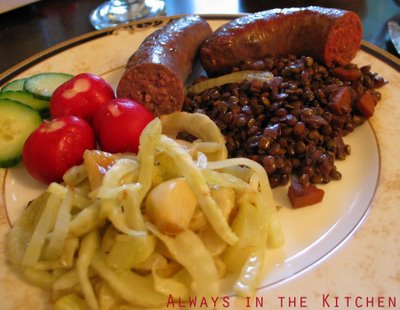
It doesn't look like it's made with stoneground whole wheat flour. It doesn't look as though it was made with canola oil instead of butter. It certainly doesn't look low in fat. For the unswervingly chocolate-oriented, it may not even look all that delicious but, really, it is all of these things. This is the revised Oatmeal Coconut Cookie of my childhood. It has come a long way since the lumpy, dark-bottomed, dense-but-tasty little nuggets that represented the most commonly baked cookie of my childhood.
Occasionally, it would be studded with raisins or chocolate chips - perhaps even carob chips - but it is completely able to stand on its own, unadorned and golden. The coconut flavour is subtle but distinct, but if you wanted a more vigorous coconut flavour, you could use coconut extract, I suppose. I'm contemplating making them with rum extract, myself. Who could refuse a Malibu flavoured cookie?
Oatmeal Coconut Cookies
Yield: about 24
1/2 cup canola oil
1 cup brown sugar (not packed)
1 egg
1 cup rolled oats
1 cup stone ground whole wheat flour
1/2 cup unsweetened fine coconut
1 teaspoon baking soda
2 teaspoons baking powder
1/2 teaspoon kosher salt
1 teaspoon vanilla extract
Preheat oven to 350°F.
In a medium mixing bowl, pour the oil, brown sugar, vanilla extract, and egg. Beat well with a wooden spoon until smooth. Add the rolled oats, coconut, and whole wheat flour in layers without stirring. Add the baking soda, baking powder and salt, and then stir the whole mixture slowly until evenly mixed.
Using a small cookie scoop or a large tablespoon, drop the cookies onto a lightly oil-spritzed baking sheet, leaving enough room for them to expand. Use a spatula to slightly flatten the tops. Bake for about 15 minutes or until just barely golden. Remove promptly to a cooling rack.
The original recipe did in fact use whole wheat flour and canola oil, but I have tinkered with the proportions and technique to yield a leaner, crisper, flatter cookie. The proportions of rolled oats and flour are equal, making it almost a granola-bar of a cookie - very oaty, and the perfect thing to snack upon mid-morning or mid-afternoon, with a cup of hot tea or coffee, as you wish.



